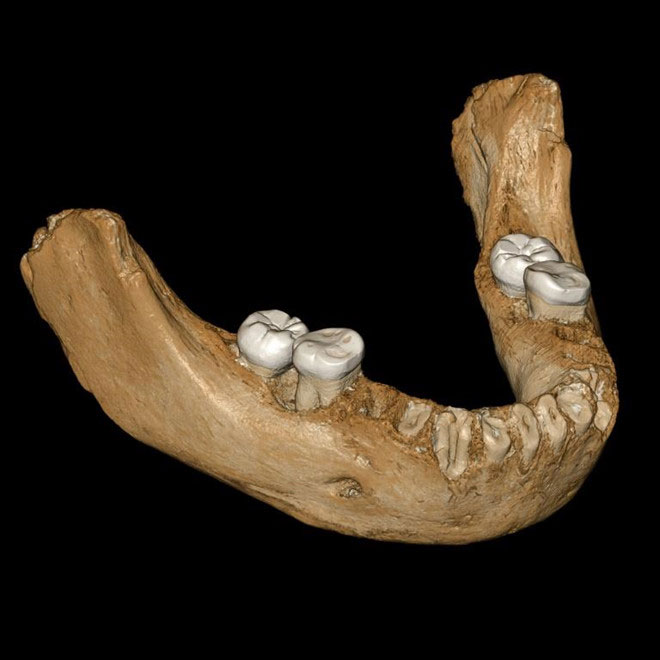Bone fossils 160,000 years explain the genetic variant of humans
The ancient fossil bone fossil dating back to 160,000 years is the oldest specimen ever discovered in the high mountains, explaining how humans adapt to an oxygen-deficient environment.
Scientists have recently discovered fossil bones of Denisovan people - a branch of the extinct human species - dating to 160,000 years in the mountains of Tibet. The finding is to prove that humans have adapted to living in high mountains much earlier than previously estimated.
Denisovan people were the first species discovered outside Southern Siberia. Experts believe the creature holds the key to explaining how modern humans evolve to adapt to low oxygen environments, according to AFP.
Denisovan people were discovered about a decade ago. The scientists determined the existence of this group of people through a piece of finger bone and two molars dating to about 80,000 years, excavated at Denisova cave in the southern Altai Mountains, Siberia.

Denisovan jaw bone fossils.(Photo: AFP).
However, the newly excavated jaw bone fossil has led researchers to conclude that the Denisovans had a very large population and existed earlier than previously predicted.
Jean-Jacques Hublin, director of the Max Planck Institute for Human Evolution, said: "Even in ancient times, living at 3,300 meters altitude in the Tibetan plateau 160,000 years ago was not who can imagine ".
The jaw bone, found in the Baishiya Karst cave in Xiahe, China, was given to a local museum by a monk before scientists began studying. Due to a long speech, the jaw bone does not have DNA to extract.
However, Hublin and his team used the most modern protein analysis method to analyze tooth samples and compare them with other Denisovan specimens found in Siberia.
"I think this helps confirm my long-standing hypothesis, that nearly all fossils in China and East Asia dating to between 350,000 and 50,000 years ago could be Denisovans , " Hublin said.
Fossil bone fossils also solve another puzzle that challenges anthropologists for years.
In 2015, researchers found that Tibetan and Han people living in high mountains have abnormal variations in the gene, called EPAS1 , that regulate hemoglobin, molecular oxygen-carrying molecules. around the blood.
When living in high mountains, the gene produces excess hemoglobin and red blood cells, making the blood more dense - the cause of hypertension, underweight and neonatal mortality.
However, variant samples found in Tibet increased much less hemoglobin and red blood cells, thus avoiding the problem of hypoxia when moving to places above 4,000 meters.
"We now understand why. It is not DNA from the Denisovan (Siberia), but DNA from the Denisovan of Tibet," Mr. Hublin explained.
- Detecting common ancestor fossils of humans and modern primates
- Species settled in the Philippines 67,000 years ago
- Discovered many new genes related to osteoporosis
- Small mutations form modern humans
- 44 gene variants related to depression were discovered
- Discovered mysterious skull bones 400,000 years old in Portugal
- Genetic variants cause early death of alcohol
- Detecting more 10 million-year-old jaw bone fossils in Kenya
- Fossilized turtle discovered 45 million years in Antarctica
- The H5N1 variant can spread to humans through respiration
- Humans know to eat plants from 180,000 years ago
- Detecting complete bone fossils of a dinosaur
 Discovered an ancient centipede fossil 99 million years old
Discovered an ancient centipede fossil 99 million years old Discovered bat-like dinosaurs in China
Discovered bat-like dinosaurs in China Discovered a 200-year-old bronze cannon of the coast
Discovered a 200-year-old bronze cannon of the coast Discover 305 million-year-old spider fossils
Discover 305 million-year-old spider fossils